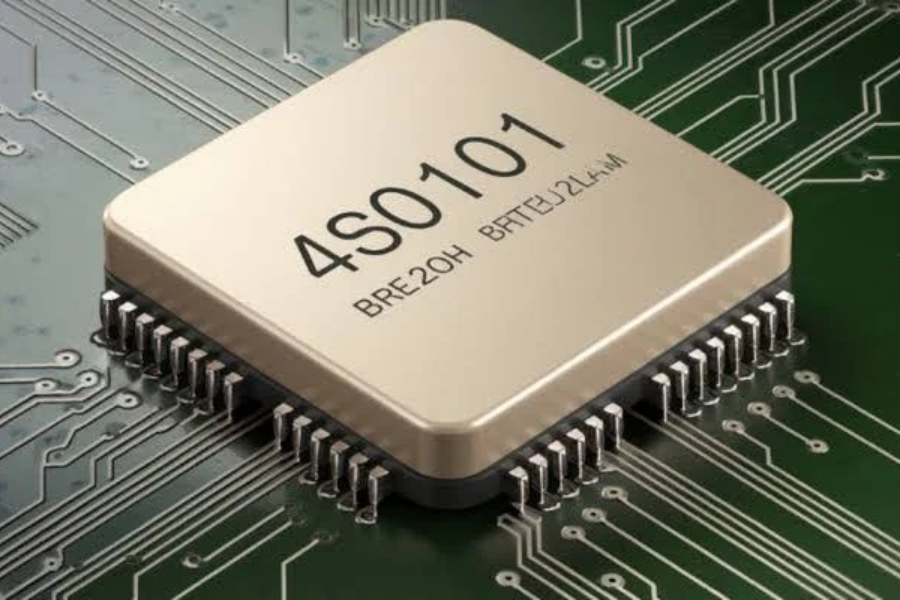Getting Started with the 4S0101 Chip: A Beginner’s Guide
Welcome to the exciting world of microchips! If you’ve come across the 4S0101 chip, you’re about to discover a versatile and powerful component that can enhance your projects.
Whether you’re a hobbyist eager to experiment or an engineer seeking reliable tech solutions, mastering the 4S0101 can take your designs to the next level. Ready to dive in? Let’s explore everything you need to know about working with the 4S0101 chip!
Microchip Basics: A Quick Overview
Microchips are the driving force behind modern electronics. They’re the brains inside devices like smartphones, computers, and even household appliances. These tiny components, made from silicon wafers, contain integrated circuits that process information and execute commands.
At the core of every microchip is the use of binary code—strings of zeros and ones that form the foundation of digital communication. This system allows the chip to handle complex tasks at high speeds.
A microchip’s internal structure is composed of transistors, diodes, and capacitors. Together, they manage electrical signals, determining the chip’s processing power. Understanding these basics will help you grasp how the 4S0101 works.
Why Choose the 4S0101 Chip? Key Benefits
The 4S0101 chip stands out for several reasons, making it popular among both beginners and professionals:
- Compact Design: Its small size makes it easy to integrate into various projects without taking up much space.
- Low Power Consumption: Ideal for battery-powered devices, it extends device life without sacrificing performance.
- High Processing Speed: The chip efficiently handles data, ensuring your devices run smoothly.
- Versatility: From consumer electronics to industrial applications, the 4S0101 adapts well to various environments.
- Strong Support Community: There’s a robust community around this chip, meaning you’ll find plenty of resources and troubleshooting support as you work with it.
How to Select and Buy the Right 4S0101 Chip
Choosing the right version of the 4S0101 chip depends on your project needs. Here’s a simple guide to help you:
- Assess Your Project Requirements: Consider power consumption, processing speed, and any special features like memory capacity.
- Find Reputable Suppliers: Look for trusted vendors who specialize in microchips and have good customer reviews.
- Check Compatibility: Ensure the chip will work with your existing hardware or software.
- Compare Prices: Shop around for the best deal, especially if you’re buying in bulk.
- Warranty Matters: Always check if there’s a warranty or return policy in case something goes wrong after purchase.
Installation Tips for the 4S0101 Chip
Installing the 4S0101 chip doesn’t have to be intimidating. Follow these tips for a smooth setup:
- Prepare a Clean, Static-Free Workspace: This prevents any accidental damage to the chip.
- Consult the Datasheet: The datasheet includes critical information such as pin configurations and voltage levels.
- Solder Carefully: Use a fine-tipped soldering iron and minimal heat to avoid damaging the chip.
- Check Connections Twice: Before powering up, double-check all your connections to ensure everything is in the right place.
- Monitor Gradual Power-Up: Power the circuit slowly and monitor voltage levels to catch any issues early.
Troubleshooting Common 4S0101 Chip Issues
As with any tech component, challenges may arise when working with the 4S0101. Here are common issues and how to solve them:
- Power Fluctuations: Ensure a stable power supply and check all your connections.
- Data Transmission Errors: Double-check your protocol settings in the software to ensure proper communication.
- Unexpected Behavior or Resets: Loose solder joints may cause this, so inspect and re-solder if necessary.
- Sluggish Performance: Review your code for efficiency. Optimizing it can improve the chip’s responsiveness.
What’s Next? The Future of the 4S0101 Chip
The 4S0101 chip holds promising potential for future applications. As the world of technology moves toward greater automation and smarter devices, this chip will play a crucial role in many fields:
- IoT Devices: Its compact size and low power consumption make it perfect for smart gadgets requiring efficient data processing.
- Edge Computing: In AI-driven environments, the 4S0101 can process data locally, minimizing latency and boosting real-time performance.
- Healthcare: With wearable health tech on the rise, the 4S0101 could power sensors and devices that monitor patients and relay important health data.
Conclusion
The 4S0101 chip is a powerful and versatile tool for anyone delving into electronics. As you gain experience, you’ll uncover its full potential in a range of projects—from hobby builds to professional applications. Though getting started may seem daunting, with the right resources and guidance, you’ll find integrating the 4S0101 chip to be an exciting and rewarding journey.
Remember, every project you create with this chip not only enhances your skills but also contributes to the broader world of technology. Keep experimenting, keep troubleshooting, and keep pushing the boundaries of what’s possible with the 4S0101 chip!
Unlock the latest insights in tech and apps at TheAppKod.







